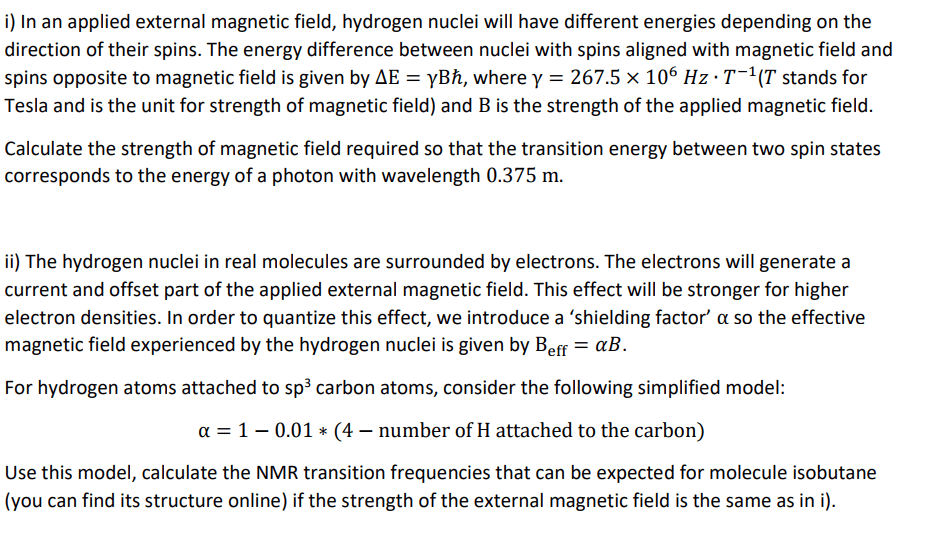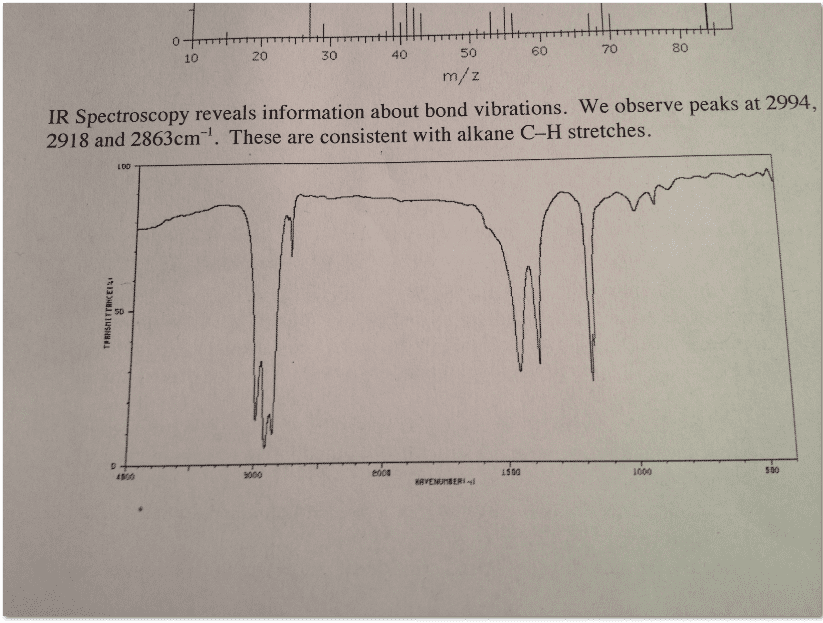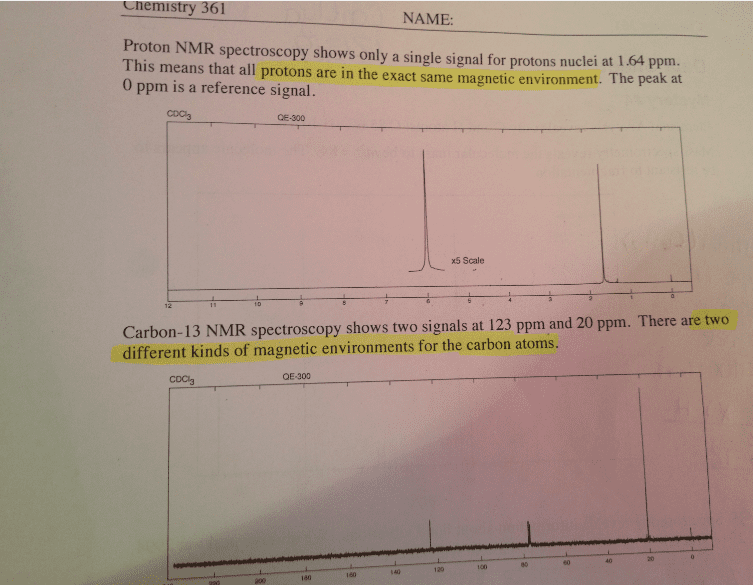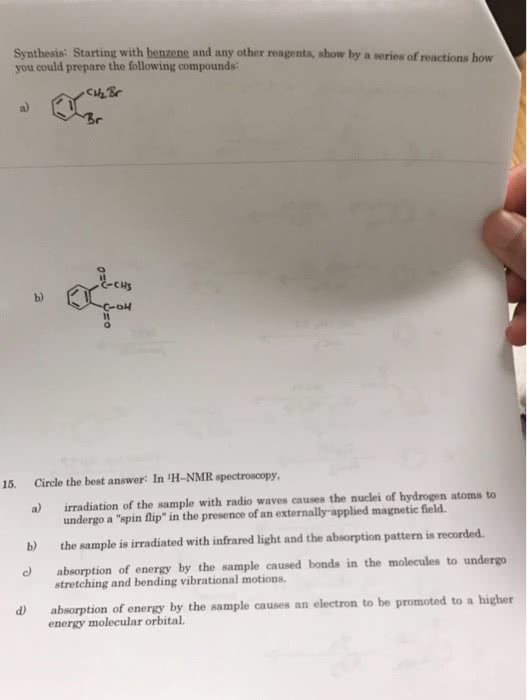CHM1022 Lecture Notes - Lecture 6: Nuclear Magnetic Resonance Spectroscopy, Proton Nuclear Magnetic Resonance, Carbon-13 Nuclear Magnetic Resonance
Document Summary
Principle: based on certain nuclei with odd atomic mass or atomic number such as h-1; c- Spin: have a magnetic field similar to that of a bar magnet. When placed in an external magnetic field, these nuclear magnets can line up in one of two ways: with or against the applied field. This is often called proton nmr because the hydrogen nucleus is just a single proton. Fourier transformation: can be used to separate out the signals from h atoms that are in different molecular environments, get the resonances and then change in to sprctrum. When change into c-13 nmr, one has to be changed is the frequency of the radio signal. Bond can vibrate with different amounts of energy at a frequency that depends on the masses of the atoms and the strength of the bond. -lighter atoms give higher frequencies, higher atoms move slowly so give lower frequencies; stronger bond give higher frequencies and weaker bond lower one.






